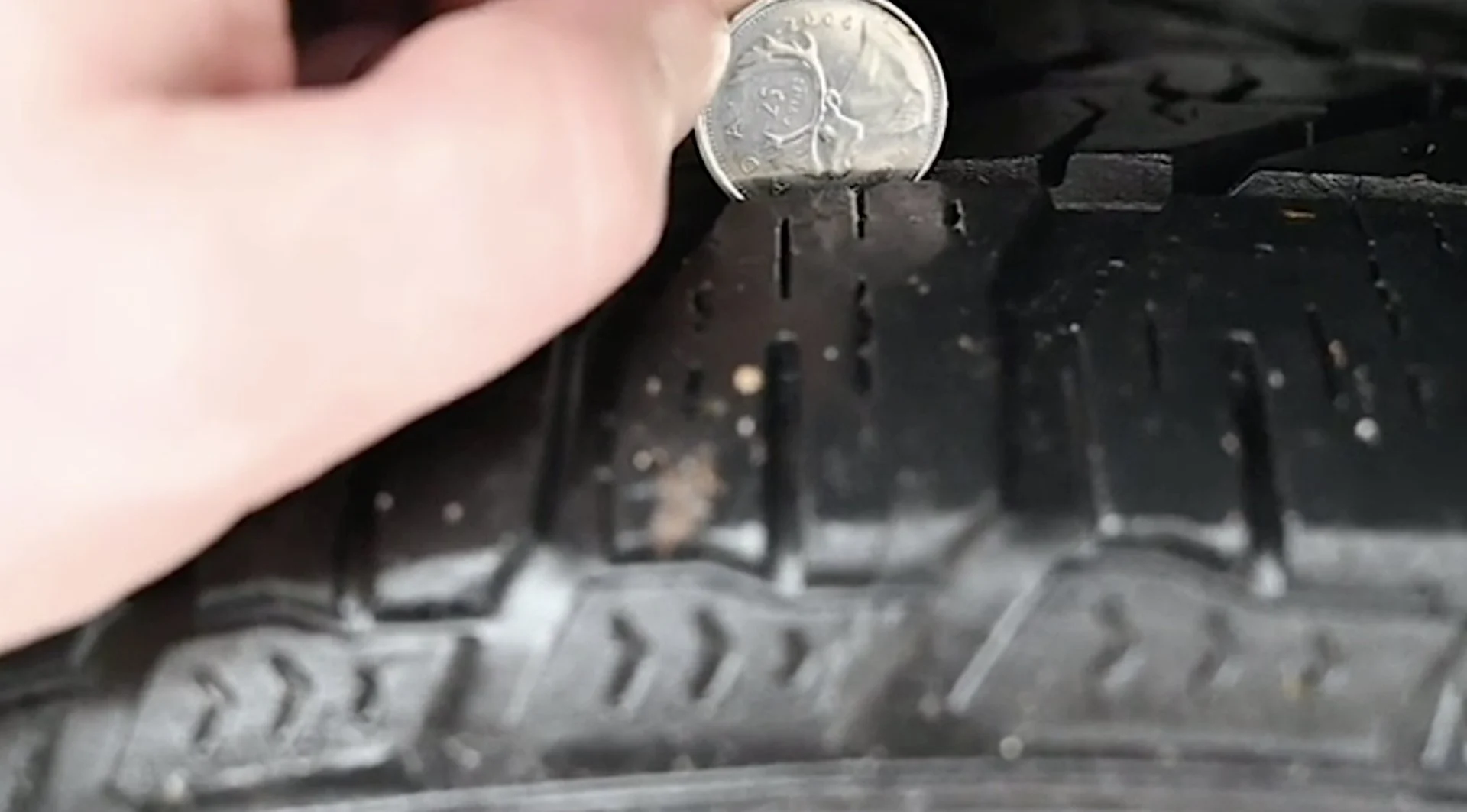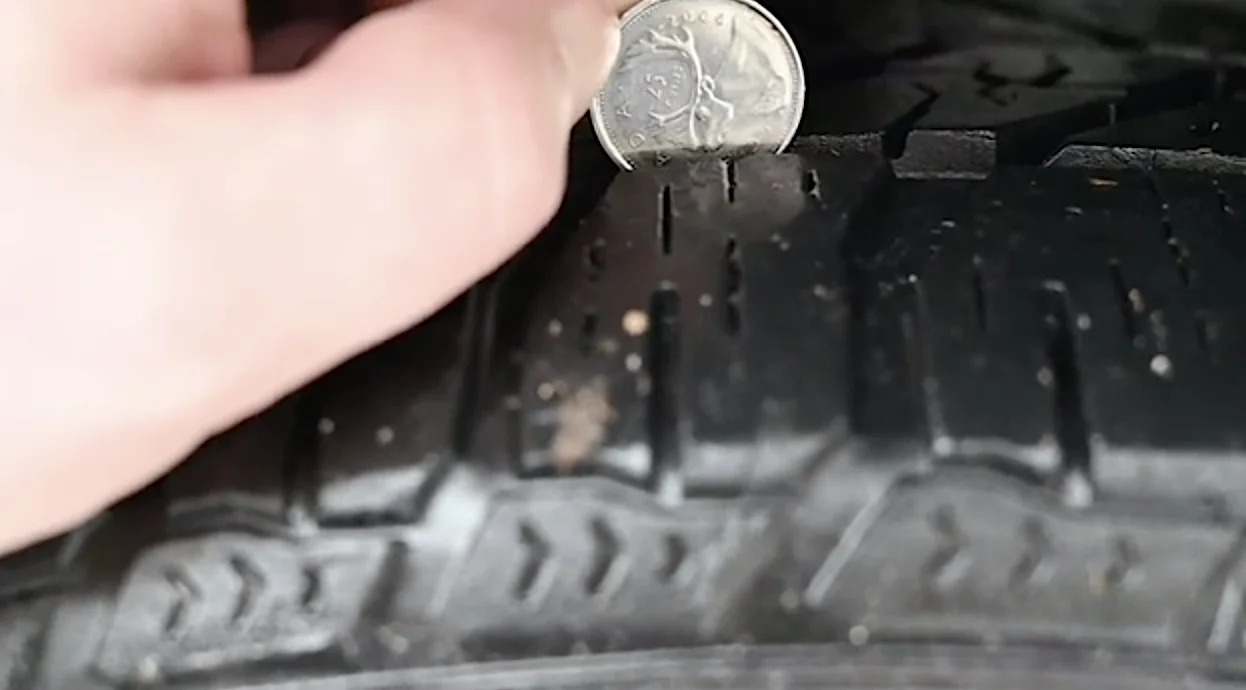
Simple tips for checking the safety of your winter tires
Using a quarter is a fast and simple way to determine if your winter tires are still safe for driving.
Unsure of the safety of your winter tires? Well, you can find out in a matter of a minute or two using just a quarter.
It's important to make sure your car is fully ready to handle the slippery and snowy roads that are a part of winter, and that includes the set of tires you're driving on. The Co-operators have a simple trick to determine if you need to replace them.
SEE ALSO: Windshield wiper blades: Is it a good idea to leave them up before a snowfall?
The first thing you need to do is turn the quarter so the caribou’s nose is facing down. Next, insert the quarter into one of the grooves on your winter tire. Then, look at the caribou’s nose. If it’s covered, your winter tire is OK.
However, if you can see the tip of the caribou’s nose, the tire should be replaced. Remember to check all four tires, as some may have more wear and tear than others.
"Whether you’re a veteran of Canada’s roadways or facing winter driving for the first time, reach your destination safely by checking your winter tire treads before you travel. Winter tires can make all the difference,” says Nicole Bellefleur, director of national auto portfolio for the Co-operators.

Check your winter tires quickly by using a quarter. (Nathan Coleman).
SHARPEN YOUR WINTER DRIVING
In addition to checking the integrity of your winter tires, now is a good time to brushen up on your driving skills, to ensure your travel is safe as possible when roads are not always. Below are three easy steps to enhance your winter driving.
Prepare your vehicle
Install winter tires and keep them properly inflated
Carry extra windshield washer fluid (with de‑icer in the -40°C range)
Replace old windshield wiper blades
Carry a scraper, a lightweight shovel and an emergency kit
Schedule a tuneup
Plan your route
Check weather and road conditions before you drive
Give yourself more time than usual, in case conditions worsen
Choose main roads that are plowed and salted
In extreme conditions, consider delaying or postponing your trip
IF YOU ONLY HAVE 2 WINTER TIRES, SHOULD THEY GO ON THE BACK OR FRONT?
Adjust your technique
Accelerate smoothly, maintain steady pressure on the gas pedal, and brake gently and early to avoid skids
Before driving, clear snow and ice from car windows and surfaces
Keep your headlights and taillights on, even during the day
Turn off cruise control if it’s wet, icy or snowy
Above all, always adjust your speed to road conditions
Thumbnail courtesy of Nathan Coleman.
Follow Nathan Howes on Twitter.











